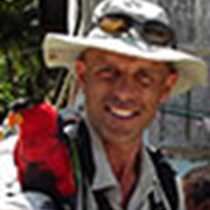Husavik to Akureyri
The day started in Husavik and ended in Akureyri. Between one and the other there was something for everybody as we encountered a diverse range of cetology, geology, ornithology and plenty of entomology. Plants don't have an 'ology' but the botanists were not forgotten.
The Husavik Whale Centre is a museum and visitor centre in this port town which is one of the whale watching centres that have developed in Iceland over the past decade. The whale watching industry has recently come into conflict with the decision of the Icelandic government to resume commercial whaling. In addition to seeing the exhibits of the centre we were given a presentation by the founder of the centre about the attitudes to whales, whale watching and whaling in Iceland.
The main destination for the day was the area around Lake Mývatn. This 37 square kilometre lake is remarkably shallow, averaging just 2.5 metres deep. The shallow nature of the lake allows light to penetrate to the bottom in all areas and allow prolific growth of algae and invertebrates. These in turn are food for large populations of fish - especially salmon and trout - and one of the most important waterfowl concentrations in Europe. The name Mývatn means 'midge water' and soon we gained ample experience of why the lake is so called. We encountered dense swarms of midges while walking along the lake shore and most agreed that even more ducks and fish would be a good thing if this might keep midge numbers down.
Lake Mývatn lies at the centre of one of the most geologically active parts of Iceland and this set the stage for the remainder of the day. Everywhere we looked were the signs of recent volcanism. This was most evident in the bubbling mud pits at Haverarond, nearby geothermal power station and the chaotic rock formations of Dimmuborgir.
The night was spent alongside in Akureyri, in preparation for our activities tomorrow but also allowing the more adventurous to sample a Friday night out in northern Iceland.
The day started in Husavik and ended in Akureyri. Between one and the other there was something for everybody as we encountered a diverse range of cetology, geology, ornithology and plenty of entomology. Plants don't have an 'ology' but the botanists were not forgotten.
The Husavik Whale Centre is a museum and visitor centre in this port town which is one of the whale watching centres that have developed in Iceland over the past decade. The whale watching industry has recently come into conflict with the decision of the Icelandic government to resume commercial whaling. In addition to seeing the exhibits of the centre we were given a presentation by the founder of the centre about the attitudes to whales, whale watching and whaling in Iceland.
The main destination for the day was the area around Lake Mývatn. This 37 square kilometre lake is remarkably shallow, averaging just 2.5 metres deep. The shallow nature of the lake allows light to penetrate to the bottom in all areas and allow prolific growth of algae and invertebrates. These in turn are food for large populations of fish - especially salmon and trout - and one of the most important waterfowl concentrations in Europe. The name Mývatn means 'midge water' and soon we gained ample experience of why the lake is so called. We encountered dense swarms of midges while walking along the lake shore and most agreed that even more ducks and fish would be a good thing if this might keep midge numbers down.
Lake Mývatn lies at the centre of one of the most geologically active parts of Iceland and this set the stage for the remainder of the day. Everywhere we looked were the signs of recent volcanism. This was most evident in the bubbling mud pits at Haverarond, nearby geothermal power station and the chaotic rock formations of Dimmuborgir.
The night was spent alongside in Akureyri, in preparation for our activities tomorrow but also allowing the more adventurous to sample a Friday night out in northern Iceland.



